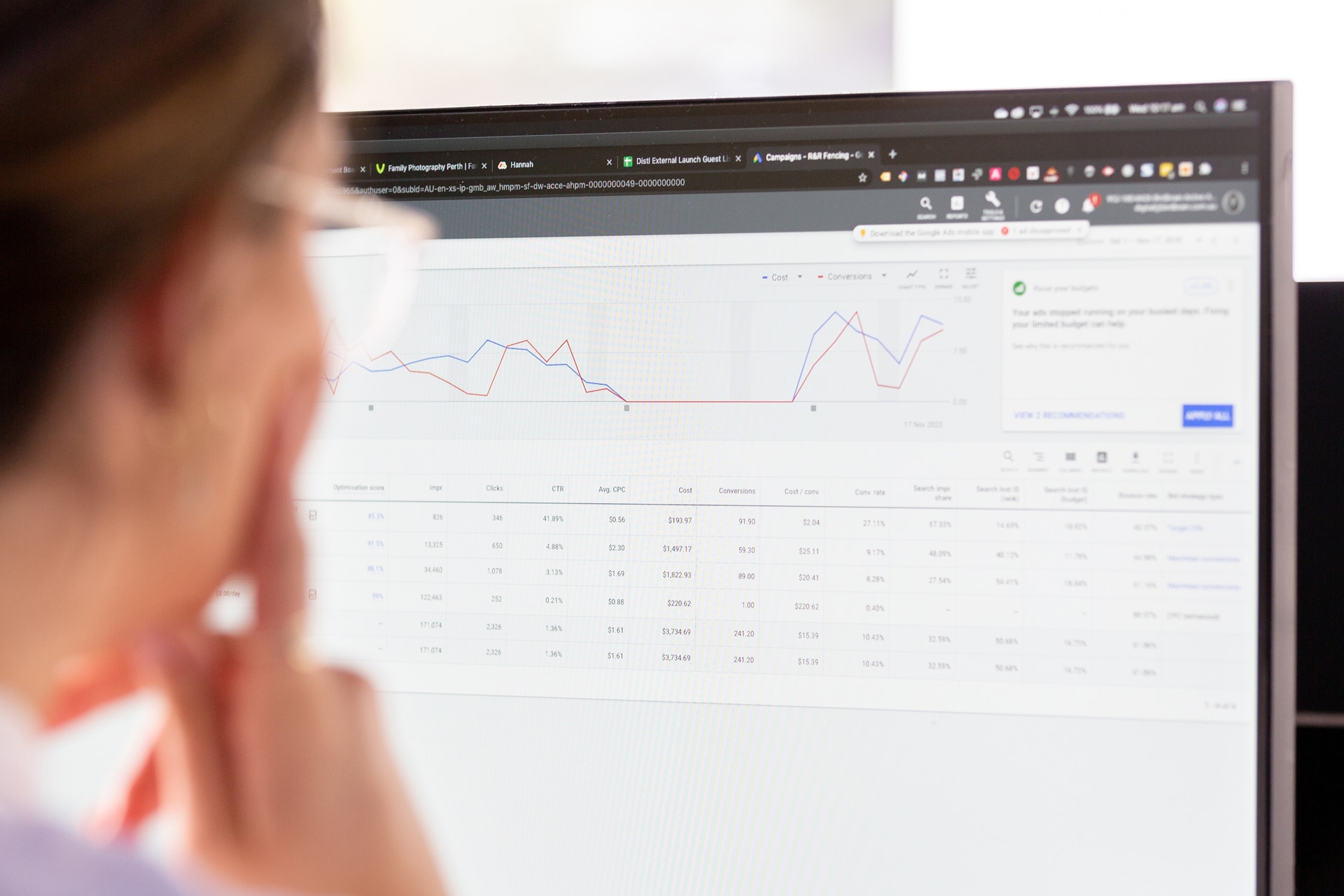Most marketing agencies (us included) make claims about providing “measurable results” for their SEO work. The question is, how do you define “results”?
The most common practice is to use a ranking report. Typically, this report will include a list of keywords (the target keyword ranking list) and the corresponding change in ranking for the period in question. In isolation, these reports offer very little value; a single metric (rankings) does not provide much insight and may not correlate with business results.
Every business has a unique set of circumstances. Some have a poor competitive position but urgently need leads. Others are established, market leaders experiencing blue ocean dominance. Others are looking to expand into a new product range or target a different client demographic.
To suggest keyword rankings alone are a measure of success for each of these clients is simplistic and short sighted. Given the wide range of possible objectives, it’s important to be clear on the outcome you need and look at the indices that best align with genuine results for your business.
Like a healthy investment portfolio, SEO should recognise the importance of both short-term and long-term outcomes. A high performing share should deliver long term capital growth as well as return short-term dividends. Similarly, good SEO should produce a short-term return, usually in the form of leads, revenue growth etc, while at the same time building an ever-growing digital footprint. This footprint is a valuable digital asset that often that has the power to significantly increase business equity over time.
To provide some insight into how we measure SEO at Distl, I’ve outlined five metrics we use to collectively represent genuine value.
1) Growth in organic search engine traffic
The graph below represents a current Distl SEO client’s traffic improvement since we started work with them. The Year on Year traffic shows a 159% increase in organic traffic.
As a general rule, good SEO will deliver ongoing traffic growth, however, it’s important to also consider the quality of this traffic. While a site wide increase in traffic may be good, the traffic may be to the wrong pages or from the wrong audience. If these other factors aren’t correctly measured, it’s possible to have a false sense of results.
Organic traffic changes can be seen in your Google Analytics account (Acquisition > All Traffic > Channels).
2) Growth in search engine traffic per page
When working with a new client, one of our first steps is to understand business goals, rather than simply following a standard checklist of marketing tasks or tactics.
The Jim Collins concept BHAG (Big Hairy Audacious Goal) resonates with me. It’s designed to capture a medium to long term aspirational goal that is hard to reach but motivates action. If the BHAG is well defined, it has the ability to align business strategy and marketing activities.
It’s important to ensure your website content strategy supports your business goals, with each web page serving a specific purpose that contributes toward your main, overarching goal. By measuring traffic at a page level over time, you’ll be able to identify whether your content is suitable for its purpose.
To see if SEO work has led to changes in search visibility, go to your Google Analytics Account: Acquisition > Search Console > Landing pages. Look at Impressions and Clicks.
3) Growth in search engine traffic per keyword
Keywords are the most granular reflection of how users find what they are looking for online. For this reason, they provide an important insight into the quality, relevance and intent of the traffic coming to your site.
Effective keyword research allows us to better understand the most relevant, in demand keywords, with a realistic level of competition. In other words, is it feasible to achieve a ranking outcome within your budget and timeframe? From those keywords, we can plan a website page hierarchy that clearly and logically delivers the best content on the right pages with ranking potential.
A keyword ranking report might demonstrate ranking change, but it doesn’t reflect actual traffic changes resulting from those keywords. By monitoring ongoing keyword traffic progress, we are able to better understand the user, and how effective our work is on a specific keyword level.
It’s important to note that Google Search Console does not show more than 75% of actual keyword data and sometimes as little as 30% depending on volume of traffic.
This aside, to see whether SEO work has yielded any changes to traffic for particular keywords, see Acquisition > Search Console > Queries.
4) Growth in conversions from search engine traffic
For most businesses, conversions are the acropolis of marketing. It’s all about getting real enquiries from real clients who are ready to spend real money.
Conversions usually come in the form of phone enquiries, email or web submissions. While it has been difficult to measure lead sources in the past, tracking and attribution software is providing greater transparency, with more accurate data collection that discounts spam submissions and calls from overseas telemarketers. By analysing not only traffic sources, but the outcomes produced, we are able to build a more complete picture.
To see if your visitors from search take action, look at Conversions > Goals > Goal URLs. Remember to segment for organic traffic.
5) Growth of search engine traffic for supporting pages that are assisting conversions
When we look closely at website conversions, it’s common to see trends in the page visits leading up to the conversion. Like an AFL midfielder kicking to the forwards, supporting pages are vital in assisting with conversions.
Although the pages attracting the search traffic might not receive the credit for the final conversion, their importance should be measured and tracked. Doing this not only demonstrates progress but helps to identify opportunities for further increases in conversions and leads.
In my opinion, it’s these insights that are the difference between genuinely effective SEO marketers and those who are fixated on a repetitive cycle of blog articles and spammy links.
A skilled SEO will provide genuine value by using a variety of metrics to identify trends and strategically create actionable tasks such as:
- Recognising similar content opportunities to widen the net for missed search topics
- Identifying UX and conversion insights that could be used on similar pages
- Recognising missing call to actions on underperforming pages
- Better understanding user intent for the business in question
- Directing paid media budget (if any) toward the higher performing supporting pages
- Increasing or decreasing the volume and style of content of underperforming pages based on the trends of more effective pages
To understand whether the content that attracts visitors from search also helps to attract enquiries look at Conversions > Goals > Reverse Goal Path (Segment for Organic traffic, then see which pages are in the goal path).
Although traditional SEO tactics may still be as relevant as ever, we believe they must be carefully measured and guided by genuine business goals. Our methodology to deliver this is a logical, strategic series of objectives and measurable key results that plot the pathway.
If you’d like to discuss whether SEO might align with your business goals.






